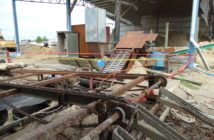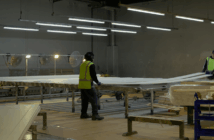Extremely poor on-site safety has been deemed the cause of an incident which nearly buried a worker alive, leaving him injured both physically and mentally

Two workers were on a job at a farm near Te Kuiti in February 2021. One was operating a digger and the other was doing measurements inside a trench, which was three metres deep and two metres wide. When one of the side walls gave way, one of the workers was engulfed – leaving only the top of his head visible.
The rescuer initially used his hands to clear the dirt away so the victim could breathe, and then used a spade until he could pull him out. The victim suffered a collapsed lung, a broken rib cage, a broken sternum, and a broken collarbone. He now also lives with post-traumatic stress disorder (PTSD) because of the incident.
The employer, R&L Drainage Limited, has now been sentenced for its health and safety failures.
A WorkSafe investigation found on-site safety was of an extremely poor standard. The trench had been built with a flat floor and steep vertical sides, rather than shored up with shields or battered into a safe slope to keep the sides stable. There had also not been any geotechnical assessment of the site to check the soil stability before work began.
R&L Drainage did not have a safe system of work in place for the job, and did not provide enough information, training, or supervision to protect workers from the risk of a trench collapse. The company also did not notify WorkSafe, as required for any excavation deeper than 1.5 metres and when a worker is intended to be in the trench.
“There’s a right way and a wrong way to do excavations – and cutting vertical sides to three metres deep then sending a worker in is certainly not the way. This was a death trap and the victim literally had to run for his life,” says WorkSafe’s area investigation manager, Paul West.
Although you might be working out of sight in a remote rural location, this should give you more reason than ever to play it safe and follow the well-established rules for this type of work.
“Anyone digging such a deep trench should be aware of the possibility of collapse and should take proper precautions. We know how to dig trenches safely – it’s not hard to take the necessary safety measures.
“While victims can heal from their physical injuries, the mental toll can have a long-lasting impact on individuals and whānau – as it has in this case. WorkSafe expects employers to look after both the physical and mental wellbeing of their workers in the aftermath of any workplace incident,” says Paul West.
Read more about excavation safety
- R&L Drainage was sentenced at Hamilton District Court on 11 January 2024.
- A fine of $275,000 was imposed, and reparations of $45,000 ordered
- R&L Drainage was charged under sections 36(1)(a) and 48(2)(c) of the Health and Safety at Work Act 2015
- Being a PCBU having a duty to ensure, so far as is reasonably practicable, the health and safety of workers who work for the PCBU, while the workers are at work in the business or undertaking, namely excavating a trench, did fail to comply with that duty, and that failure exposed the workers to a risk of death or serious injury, arising from a trench collapse.
- The maximum penalty is a fine not exceeding $1.5 million.
- R&L Drainage was also charged under regulation 26(2) of the Health and Safety in Employment Regulations; and Schedule 1, clause 2(4) of the Health and Safety at Work Act 2015
- Being an employer which intended to commence notifiable work or any work that would at any time include any notifiable work, namely work in a trench in which any person is required to work in a space more than 1.5 metres deep and having a depth greater than the horizontal width at the top, did fail to lodge notice of that intention so far as was reasonably practicable.
- The maximum penalty is a fine not exceeding $50,000.








